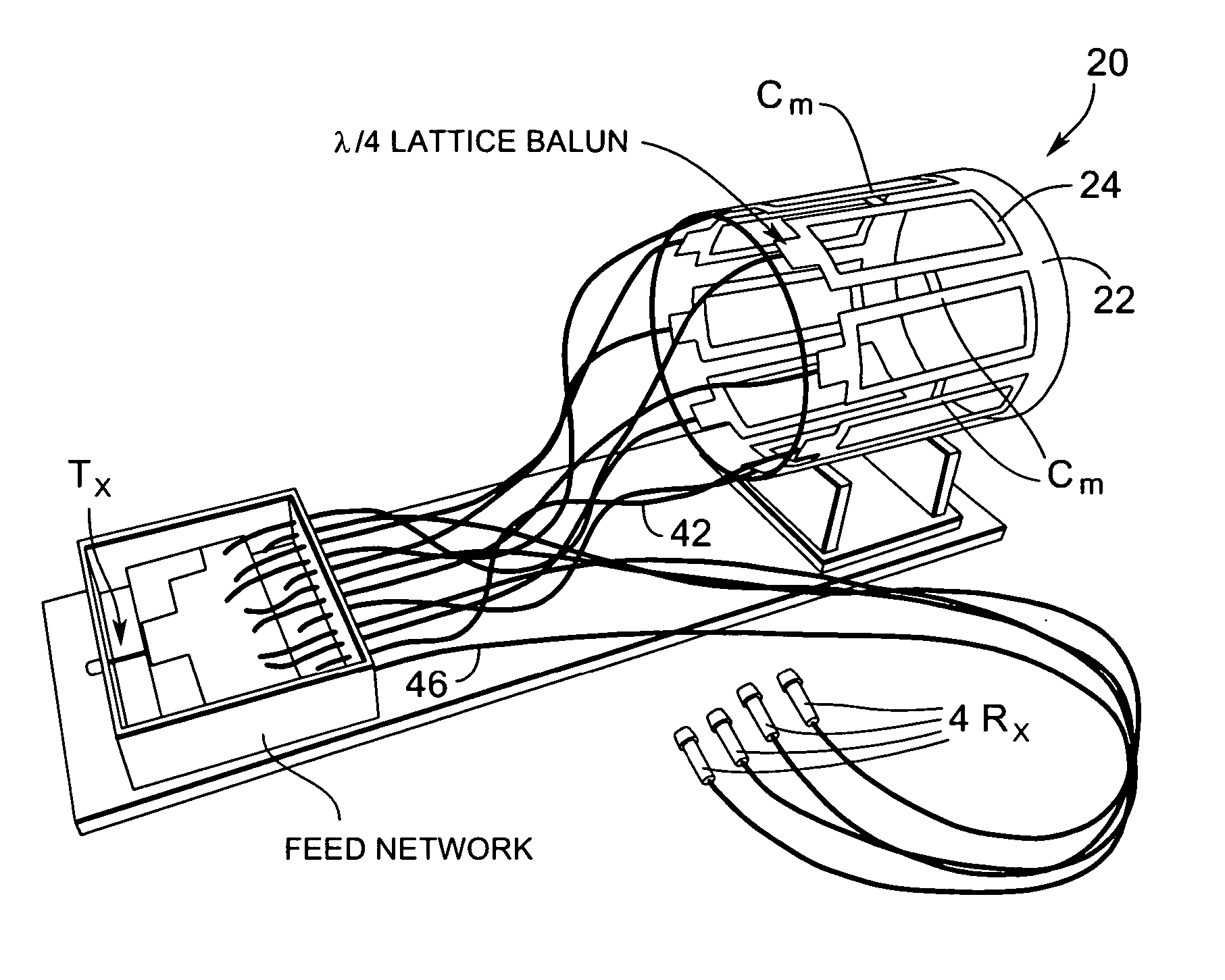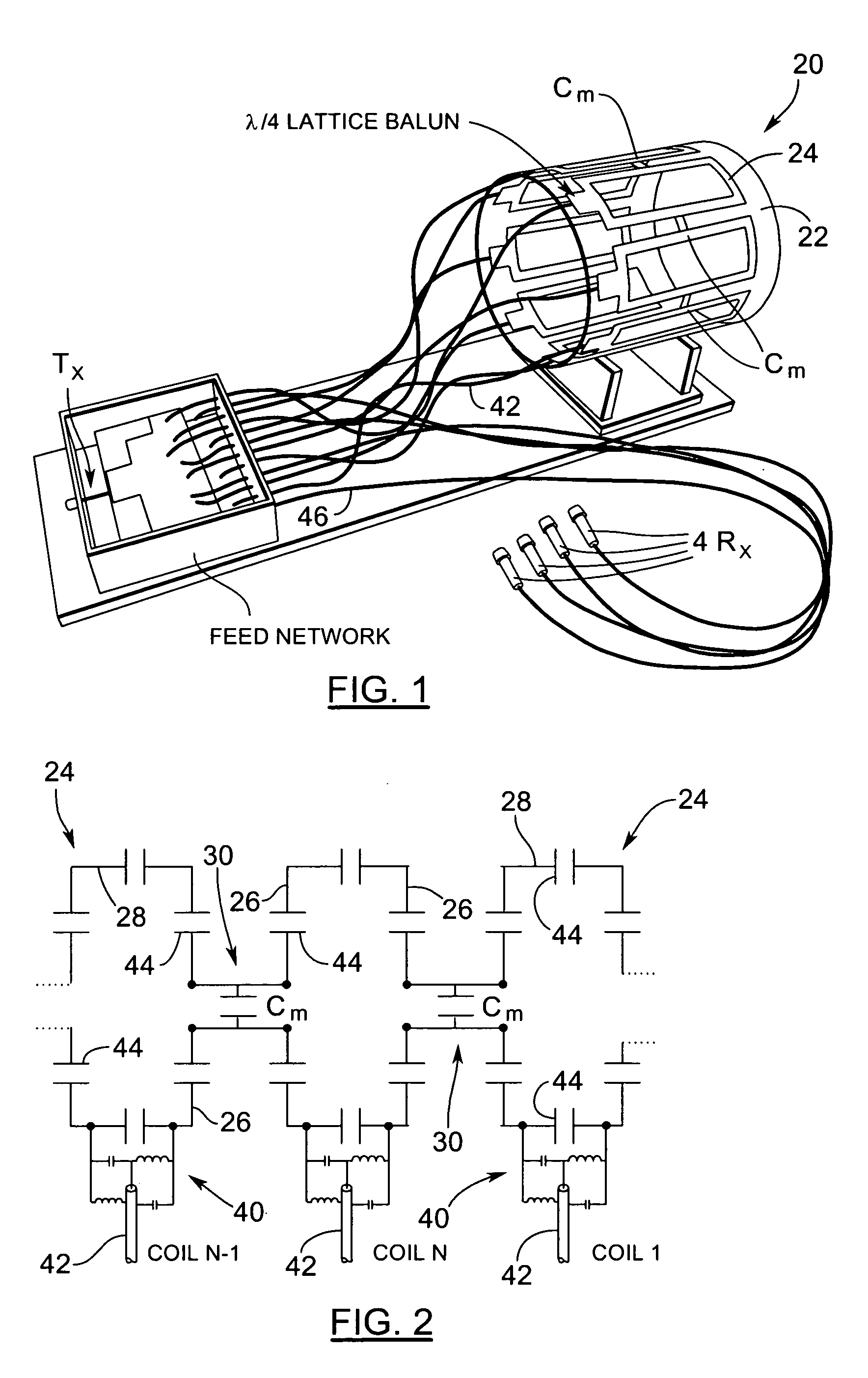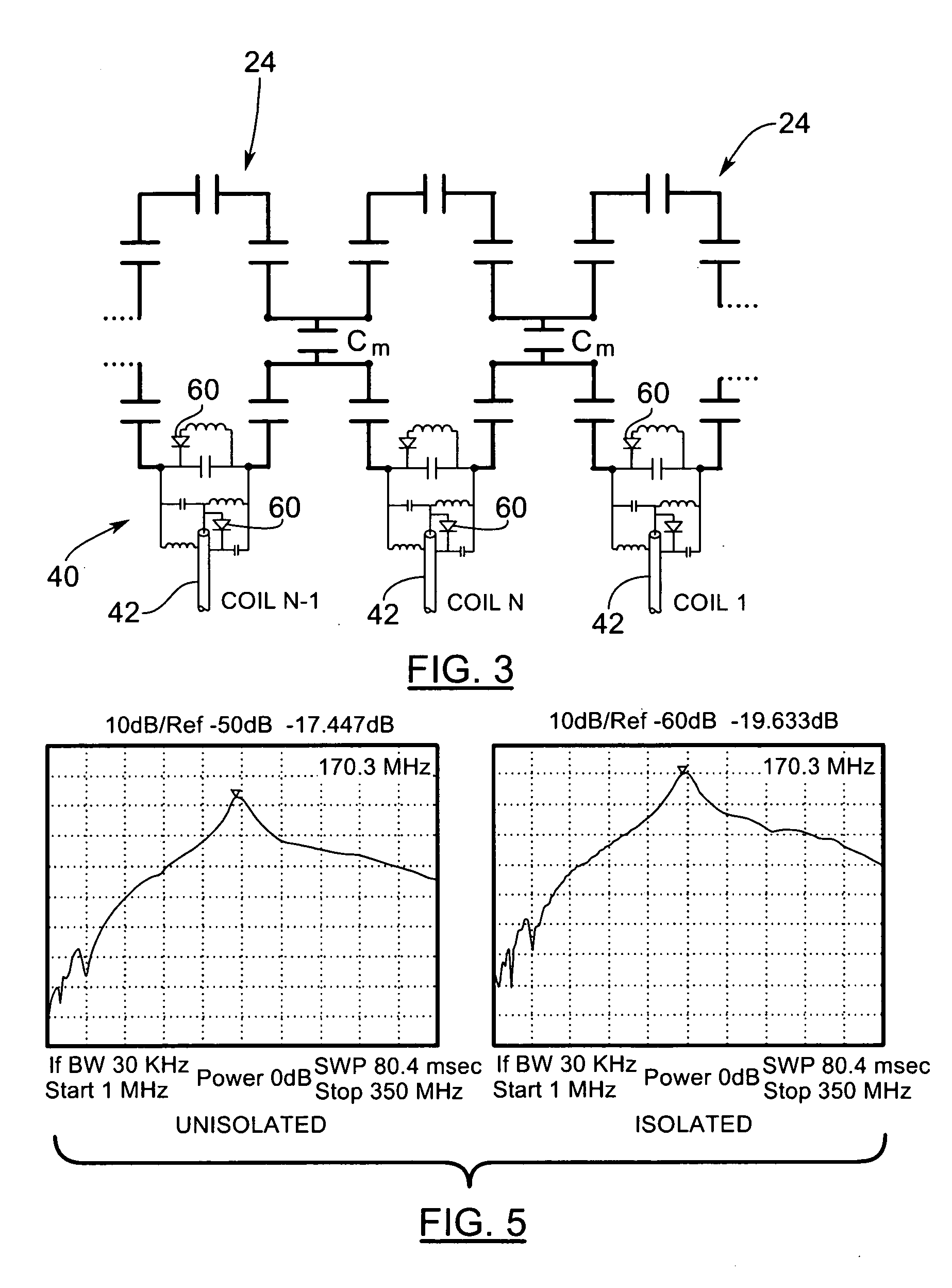Transceive surface coil array for magnetic resonance imaging and spectroscopy
a magnetic resonance imaging and spectroscopy technology, applied in the field of magnetic resonance imaging (mri), can solve the problems of increasing local and global specific absorption rate, increasing radiation loss, and less effective high field regime, and achieving the effects of reducing image artefacts, reducing radiation loss, and reducing radiation loss
- Summary
- Abstract
- Description
- Claims
- Application Information
AI Technical Summary
Benefits of technology
Problems solved by technology
Method used
Image
Examples
Embodiment Construction
[0046] Turning now to FIGS. 1 and 2, a transceive surface coil (TSC) array for magnetic resonance imaging and spectroscopy is shown and is generally identified by reference numeral 20. As can be seen, TSC array 20 comprises a cylindrical supporting shell 22 on which are mounted a plurality of generally equally spaced, rectangular surface coils 24. The shell 22 is formed of acrylic and has inside and outside diameters of approximately 24.1 cm and 25.4 cm respectively. In this particular example, the TSC array includes eight (8) surface coils 24. Each of the surface coils 24 is substantially identical and is constructed of conductive strips, in this case copper tape, having a thickness equal to approximately 50 μm. Each surface coil 24 includes two legs 26 having a length of approximately 21 cm and two legs 28 having a length of approximately 8.1 cm. The width of each leg is approximately 63.5 mm and the inter-surface coil spacing is approximately 2 cm.
[0047] A magnetic decoupling ci...
PUM
 Login to View More
Login to View More Abstract
Description
Claims
Application Information
 Login to View More
Login to View More - R&D
- Intellectual Property
- Life Sciences
- Materials
- Tech Scout
- Unparalleled Data Quality
- Higher Quality Content
- 60% Fewer Hallucinations
Browse by: Latest US Patents, China's latest patents, Technical Efficacy Thesaurus, Application Domain, Technology Topic, Popular Technical Reports.
© 2025 PatSnap. All rights reserved.Legal|Privacy policy|Modern Slavery Act Transparency Statement|Sitemap|About US| Contact US: help@patsnap.com



